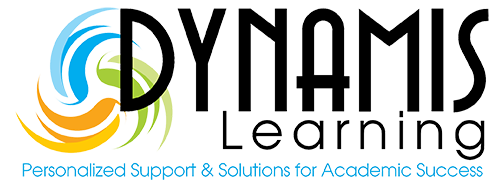If your child is in elementary school, chances are you have heard of RACE. For those of you who have never heard of it or need a refresher, RACE is an acronym. It stands for: Restate the question. Answer the question. Cite the evidence. Explain the answer.
 RACE has become a rather effective tool in teaching young writers how to accurately answer extended response questions. This skill is particularly useful today because standardized tests such as the Georgia Milestones use extended response questions on all testing grade levels.
RACE has become a rather effective tool in teaching young writers how to accurately answer extended response questions. This skill is particularly useful today because standardized tests such as the Georgia Milestones use extended response questions on all testing grade levels.
RACE is a helpful tool for any student to have, particularly when learning how to write. It is a stable foundation on which to further develop writing skills, which is why it is important to learn early on.
If your child is in elementary school, the RACE strategy is something they should begin mastering by mid-third grade. Third grade is the first time students take the Milestones, and the reading comprehension portion of the test carries the most weight for pass/fail in that grade level. There are many study tools that can be used at home, including the Georgia Milestones at a Glance Study Guide. This includes examples of extended response questions that give students an opportunity to practice for the actual exam. These questions are the best place to start practicing RACE at home.
 The concept of RACE has been around for a long time, but the acronym is relatively new. It has always been essential to reading comprehension as well as writing proficiency to be able to know what a question is asking and to answer it accurately. The reason why RACE has gained so much attention is because it gives beginning readers and writers a step-by-step process to follow as they learn to answer extended response questions.
The concept of RACE has been around for a long time, but the acronym is relatively new. It has always been essential to reading comprehension as well as writing proficiency to be able to know what a question is asking and to answer it accurately. The reason why RACE has gained so much attention is because it gives beginning readers and writers a step-by-step process to follow as they learn to answer extended response questions.
At the beginning stages of learning RACE, it is important for students to know and understand what each step is, then how to execute each step accurately. Having an acronym to remember is useful, but parents and teachers can give students more tools if needed. For example, students just learning to use the strategy can have a RACE chart to reference or can even write it themselves in the margin of their paper. As they work through an extended response question, they can refer back to the acronym and even check off letters as they complete each task. This gives students a more concrete approach to the strategy.
Again, RACE is a foundation for children to build on, so it is important for this foundation to be strong before they move on to middle and high school.
Once your child has reached middle school, and especially high school, you may notice that all mentions of the RACE strategy have essentially vanished. This does not mean that it is no longer being used. It does mean that students are expected to already have the foundation mastered and should no longer need the handy acronym to guide them. If your child never learned RACE in elementary school  and is struggling to answer extended response questions, it is an even more valuable tool. What is important for middle and high school students and their parents to remember is that multi-sentence answers at these grade levels are expected to look more fluid and natural. Therefore, it is important to go beyond the four basic steps of RACE and expand upon each step of the original strategy.
and is struggling to answer extended response questions, it is an even more valuable tool. What is important for middle and high school students and their parents to remember is that multi-sentence answers at these grade levels are expected to look more fluid and natural. Therefore, it is important to go beyond the four basic steps of RACE and expand upon each step of the original strategy.
If you notice your child is lacking confidence in their writing and is having difficulties answering extended response questions, a writing tutor can help them to further develop these skills. Writing tutors will be familiar with the RACE strategy (many of our tutors are), and they can help your child build their knowledge beyond the standard strategy into proficiency.
